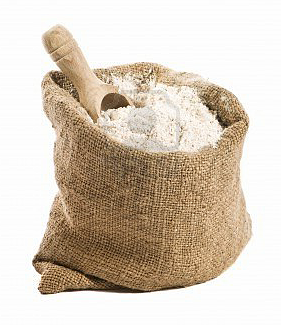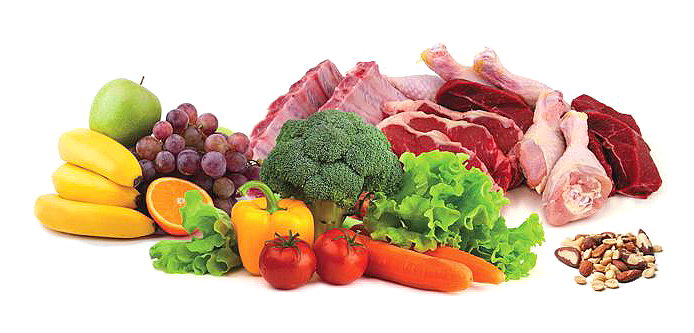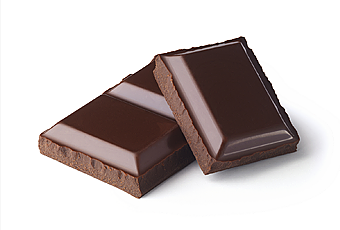Popular Articles
- Best Vitamins for Fibromyalgia Pain
- Anatrin Supplement Facts
- Herbal Treatment of Fibromyalgia
- Medications That May Interact with Anatrin
- Alternative Treatments for Fibromyalgia Pain
- Is Paleo the Best Diet for Fibromyalgia?
- 39 Signs and Symptoms of Fibromyalgia
- Omega-3 for Fibromyalgia
- 5 HTP and Fibromyalgia
- Childhood Abuse Is Linked to Fibromyalgia
- More Articles ...
 Foods to Avoid if You Suffer from FibromyalgiaIn This Article
Fibromyalgia, with its thirty- nine known symptoms, is finally getting the attention it deserves in the medical community. Since there s no cure for it, many fibromyalgia patients seek alternatives such as diet changes. There are foods to avoid if you suffer from fibromyalgia.
While there is no medical research stating that certain specific foods must be avoided in fibromyalgia, it is quite understandable that a person with fibromyalgia might ask what foods to avoid if you have fibromyalgia. Anecdotal evidence, the evidence form people with fibromyalgia themselves, is pointing to certain foods that should be avoided and others which should be added to find relief from fibromyalgia symptoms. Many fibromyalgia sufferers are sensitive to a variety of foods. Unfortunately, the food sensitivities are as varied and unique as the people are themselves. People with fibromyalgia must pay attention to how various foods make them feel either better or worse. A published in Clinical Rheumatology stated that 42% of fibromyalgia patients suffer from at least one food sensitivity. Medical doctors began recommending that fibromyalgia patients keep a food journal and perform elimination tests to discover how they react to every food they eat. For example, gluten and dairy almost always give fibromyalgia patients cause for concern. When a fibromyalgia patient eliminates foods such as gluten and dairy from the diet, they feel better within weeks. Adding the foods back several weeks later causes a flare-up in symptoms. This tells the fibromyalgia patient almost instantly that a particular food is simply one he should not eat. Fatigue, intestinal issues, and pain such as headaches are often resolved when "wrong" food is eliminated. Foods to avoid if you have fibromyalgia: “white” foodsA good place to start for anyone is a “clean” diet which has no processed or junk food, no fast food, no white sugar or flour products, no hydrogenated oils or margarine, no chemicals, no alcohol or tobacco, and no high fructose corn syrup.
Eating a diet which is high in fruits and vegetables, lean protein, whole grains, and healthy fats is a great start. Once the fibromyalgia patient is eating “clean,” he or she may choose to experiment with eating smaller meals five or six times a day. Many people report that eating a protein and carbohydrate source in small meals throughout the day helps them lose weight and have more energy. Included in this recommendation is sticking to the habit of eating breakfast every day. More foods to avoid: gluten and dairyFibromyalgia patients may see some reduction in symptoms by eating “clean,” but many fibromyalgia patients are reporting that they experience greater relief by going on a strict Paleo or ancestral diet. Paleo diet forums are filling up with reports of positive results from the Paleo diet for fibromyalgia.
Dr. Hansen describes a case study involving a woman who saw dramatic improvement on the Paleo diet in combination with exercise and other lifestyle changes. His approach is to address the Irritable Bowel Syndrome in fibromyalgia first, rather than the pain. This is because gut permeability (“leaky gut”) is associated with the abnormal processing of sensory input by the central nervous system, triggering tremendous pain signals in the brain of someone with fibromyalgia. Pain medications only reduce the pain felt in fibromyalgia patients by about 50% at best. Prognosis remains poor for most fibromyalgia patients even after two years of standard medical protocols. Many fibromyalgia patients believe they are “doomed’ to take prescription narcotic pain medication for the rest of their lives. Dr. Hansen reports that his patient experienced pain levels between 5/10 to 9/10, with ten being the worst pain she had ever felt in her life, on a daily basis. This incapacitating pain interfered with her life and relationships. The patient took Cymbalta, Lyrica, Lomotil, Requip, Norco, Synthroid, and a female hormone. She was under the care of a family physician and a rheumatologist. Dr. Hansen told the patient to stay on her medications, switch to the Paleo diet, and add an exercise program. He increased her pain medication when she called a few days later to say her pain was through the roof. She saw an allergy specialist, and discovered she was sensitive to wheat, corn, soy, walnuts, scallops, and sesame seeds. She eliminated those foods, along with gluten and dairy. Dr. Hansen advised the patient to go on a strict Paleo diet called Whole9, and add yoga, meditation, and soothing audios. He increased her Opana again. In three months, the patient’s pain levels had decreased to 8/10 at worst and 3/10 at best, but usually 4/10. She was swimming and doing yoga regularly, and was following the Whole9 Paleo diet. Within a month, she was able to get off opiates entirely. She returned to normal daily living with minimal pain. She described her pain as 4/10 at worst and 1/10 at best. She still took non-opiate pain relievers. One month after that, the patient reported that her IBS symptoms were gone. She said when she ate beans, her symptoms returned. She stayed on a very strict Paleo diet after that. At six months after starting the Whole9 Paleo diet, the patient reported that she had no more joint pain at all, no IBS at all, she was completely off narcotic pain medications, and she experienced muscle pain only intermittently. She was sleeping well and was leading a busy, happy life. The Whole9/Whole 30 Diet explainedThe Whole9/Whole30 Diet approach is a positive “here is what we may eat,” rather than a “here are the foods you must avoid or die” approach. While it is true that people on the strict Whole 30 version of the Paleo diet do not eat any dairy, grains, legumes, sugar. Or processed junk foods, there are a lot of appetizing foods that the fibromyalgia patient is allowed to eat. People on the Whole 30 diet eat real food: grass-fed and pastured meat, fresh yard eggs, cold-water fish, and local, organic vegetables and fruit. This food is nutritionally dense, calorie for calorie. Carbohydrates come from vegetables rather than bread and candy. Fats come from avocadoes, coconuts, and bacon rather than shortening, margarine, and vegetable cooking oil. Tweaking Whole9/ Whole 30Some people with fibromyalgia will have to experiment further with food in order for all symptoms to resolve. Dr. Chris Kresser, ND, says that if a person suffers from migraines, he or she needs to eliminate fermented foods, which are allowed on the original Paleo diet. Cheeses, sauerkraut, yogurt, kefir, kimchee, kombucha, alcohol, and vinegar must go.
People are noticing fewer migraines and less intense headaches within a week of dropping these foods from their diet. Some people are able to eliminate their migraines completely simply by eliminating these foods. Starches such as sweet potatoes and bananas may work for some people and not work for others. Anyone following the GAPS diet is told not to eat any starchy foods at all, in order to starve any bacterial or yeast overgrowth in the gut. However, after a certain point in time, staying on the GAPS diet may kill the beneficial bacteria. This throws the microbial balance off in a different direction, and new health issues can arise, such as constipation. Foods to avoid if you have fibromyalgia: NightshadesThe nightshade vegetables are tomatoes, peppers, potatoes, and eggplants. Some people with fibromyalgia have trouble with one or all of these foods. Others can eat them with no problem. Nightshades are one food group that simply must be experimented with by each individual. SourcesWeb MD.com, “Fibromyalgia and diet: Will changing your diet help you cope with fibromyalgia?” by Jenn Uscher Holistic Health Info.com, “Treating Fibromyalgia with the Paleo Diet,” by Robert M. Hansen, MD Whole9 Life.com, “Nutrition in Sixty Seconds”
[+] Show All
|
| Next Article: 39 Signs and Symptoms of Fibromyalgia |





 The five bad “white” foods to avoid are white sugar, white flour, white salt, white fat on meat, and white starches like rice and potatoes.
The five bad “white” foods to avoid are white sugar, white flour, white salt, white fat on meat, and white starches like rice and potatoes. Medical doctors, such as Robert M. Hansen, MD, and naturopathic doctors, such as Chris Kresser, ND, are seeing some impressive results in their patients who go on the Paleo diet.
Medical doctors, such as Robert M. Hansen, MD, and naturopathic doctors, such as Chris Kresser, ND, are seeing some impressive results in their patients who go on the Paleo diet. In addition, anything with arginine must be eliminated. On the Paleo diet, this includes chocolate and nuts.
In addition, anything with arginine must be eliminated. On the Paleo diet, this includes chocolate and nuts.